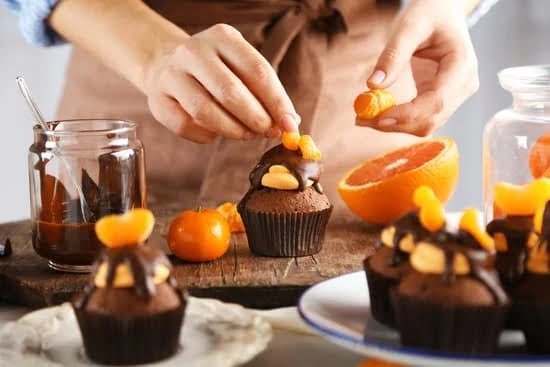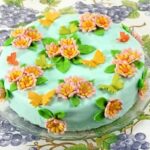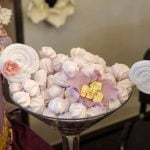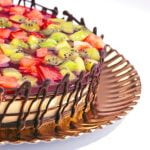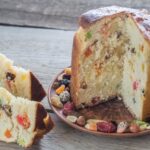Are you looking to elevate your cake decorating skills? Learning how to decorate cake with royal icing is a great way to create stunning and intricate designs that will impress any guest.
Royal icing is a versatile and traditional frosting that is perfect for creating intricate decorations on cakes, cookies, and other baked goods. In this article, we will explore the basics of royal icing, essential tools and ingredients, preparation techniques, step-by-step decorating methods, troubleshooting common issues, alternative techniques, and finishing touches for beautifully decorated cakes.
Royal icing is a popular choice for creating decorative elements on cakes due to its smooth finish and ability to dry hard, making it perfect for delicate designs. Understanding the basics of royal icing is essential before attempting to decorate a cake with this medium. With the right tools and ingredients, as well as proper preparation techniques, you can create stunning designs that are sure to stand out.
Before diving into the world of royal icing decoration, it’s important to have the essential tools and ingredients on hand. From piping bags and tips to meringue powder and food coloring, having the right supplies will make the decorating process much smoother.
Additionally, preparing your cake for royal icing decoration requires some specific tips and tricks to ensure a flawless finish. Through this article, we will guide you through each step of the process so you can confidently decorate your cakes with royal icing like a pro.
Essential Tools and Ingredients for Decorating With Royal Icing
Tools Needed for Decorating With Royal Icing
When it comes to decorating a cake with royal icing, having the right tools is essential. You will need piping bags, various sizes of round and star tips, offset spatula, parchment paper, toothpicks or skewers, and a turntable for smooth and easy decorating. These tools will help you achieve the perfect designs and techniques when working with royal icing.
Ingredients for Making Royal Icing
To create the perfect royal icing for decorating your cake, you will need confectioner’s sugar (also known as powdered sugar), meringue powder or egg whites, water, and flavor extracts if desired. Meringue powder is a popular choice as it reduces the risk of foodborne illness associated with using raw egg whites. However, if you prefer to use fresh egg whites in your royal icing, be sure to select pasteurized eggs to eliminate any health concerns.
Additional Ingredients for Coloring and Flavoring Royal Icing
In addition to the basic ingredients for making royal icing, you may also want to have gel food coloring on hand to add vibrant colors to your designs. You can also enhance the flavor of your royal icing by adding small amounts of flavored extracts such as vanilla, almond, or lemon.
These additional ingredients will not only make your royal icing visually appealing but also add a delightful taste to your decorated cake. Learning how to decorate cake with royal icing is easier when you have all these essential tools and ingredients at hand.
Preparing Your Cake for Royal Icing Decoration
When preparing your cake for royal icing decoration, there are several tips and tricks to keep in mind to ensure that the final result is as beautiful as possible.
Ensure a Smooth Surface
Before applying royal icing to your cake, it’s essential to ensure that the surface is smooth and free from any imperfections. You can achieve this by using a high-quality flat icing knife or spatula to apply a thin layer of buttercream or ganache to the cake. This will create a smooth base for the royal icing and prevent any bumps or lumps from showing through the decorations.
Chill Your Cake
Once you have applied your base layer of buttercream or ganache, it’s important to chill your cake in the refrigerator for at least 30 minutes before applying royal icing. This step will help set the base layer and make it easier to work with when piping and flooding with royal icing.
Avoid Over-Moistening
One common mistake when preparing a cake for royal icing decoration is over-moistening the surface. Too much moisture can cause the royal icing to become runny and difficult to work with, leading to less defined decorations. To avoid this, be mindful of how much liquid you are using in your base layer and make sure it has had enough time to set before applying royal icing.
By following these tips and tricks for preparing your cake for royal icing decoration, you can ensure that your final result is flawless and visually stunning. With a smooth surface, proper chilling, and careful control of moisture levels, you’ll be well on your way to creating beautifully decorated cakes using royal icing techniques.
Step-by-Step Guide to Piping and Flooding Techniques
Once you have prepared your cake for royal icing decoration, it’s time to start the actual process of piping and flooding. Here is a step-by-step guide to help you achieve beautiful designs on your cake:
1. Prepare your royal icing: Make sure the consistency of your royal icing is appropriate for piping and flooding. It should be thick enough to hold its shape when piped, but thin enough to spread and fill spaces when flooded.
2. Choose the right tip: Select the appropriate piping tip for the design you want to create. A small round tip is great for outlining and writing, while larger tips are suitable for filling in spaces.
3. Practice piping: Before decorating your cake, practice piping on a flat surface or parchment paper to get a feel for how the icing flows from the bag. This will help you control the pressure and movement of the icing as you pipe on the cake.
4. Piping technique: Hold the piping bag at an angle close to the surface of the cake and apply gentle pressure to release the icing. Use smooth and steady movements to create lines and shapes as per your design.
5. Flooding technique: Once you have piped your outline, use a slightly thinner royal icing to fill in the area within the outline. Gently guide the icing into all spaces using a toothpick or scribe tool, making sure it reaches every corner without overflowing.
6. Allow drying time: After completing your design, allow the royal icing to dry completely before adding additional layers or details on top.
By following these steps, you’ll be able to create stunning designs on your cakes using royal icing.
Remember that practice makes perfect when it comes to decorating with royal icing. Don’t be discouraged if your first attempts don’t turn out as expected – keep practicing and experimenting with different techniques until you achieve the results you desire.
Whether it’s simple lines and swirls or intricate floral patterns, mastering these piping and flooding techniques will open up a world of possibilities for decorating cakes with royal icing.
Adding Intricate Details and Designs With Royal Icing
When it comes to adding intricate details and designs with royal icing, the possibilities are endless. Whether you want to create delicate lace patterns, intricate flowers, or personalized messages, royal icing offers a versatile medium for decorating cakes. Here are some tips on how to achieve stunning designs with royal icing:
- Begin by outlining the design with a fine-tipped piping bag. This will create a border for your design and prevent the icing from spreading too much.
- Once you have outlined the design, use a slightly thinner royal icing consistency to “flood” or fill in the area within the outline. Use a toothpick or scribe tool to spread the icing evenly and pop any air bubbles.
- For multi-colored designs, allow each color of flood icing to dry before adding additional details on top. This will prevent colors from bleeding into each other and help create clean, defined lines.
For more intricate details such as flowers or figurines, consider using a piping tip with a smaller opening for precision. Practice on parchment paper before attempting to pipe directly onto your cake to ensure that you have full control over your technique.
Don’t be afraid to experiment with different techniques such as brush embroidery or stenciling with royal icing. These methods can add depth and dimension to your cake decorations, creating an elegant and professional look.
With these tips in mind, you’ll be well-equipped to add intricate details and designs with royal icing to elevate your cake decorating skills to the next level. Remember that practice makes perfect, so don’t be discouraged if your first attempts aren’t flawless – keep honing your craft and soon enough you’ll be creating show-stopping designs with ease.
Troubleshooting Common Issues With Royal Icing Decoration
Decorating a cake with royal icing can be a beautiful and elegant way to add intricate designs and details. However, it can also come with its fair share of challenges. Here are some common issues you may encounter when decorating with royal icing and how to troubleshoot them.
One common problem when working with royal icing is air bubbles in the icing. These can cause unsightly bumps and imperfections in your design. To prevent this issue, make sure to properly mix your royal icing to the right consistency and avoid overmixing, which can introduce more air into the mixture. Additionally, using a toothpick or a scribe tool to carefully pop any air bubbles that do form can help smooth out the surface of your decorated cake.
Another issue you may face is color bleeding or running in your designs. This can happen when different colored icings come into contact with each other and start to blend. To avoid this problem, allow each color of icing to fully dry before adding another color on top of it. This will create a barrier between the colors and prevent them from mixing together.
Lastly, uneven drying or craters forming in your royal icing designs can be frustrating. This often occurs when the icing is too thick or too thin. Ensuring that your royal icing is at the right consistency for both piping and flooding techniques is crucial for achieving smooth and even results. If you encounter craters or uneven drying, try adjusting the thickness of your icing and practicing on a test surface before decorating your actual cake.
| Common Issue | Troubleshooting Tip |
|---|---|
| Air bubbles in icing | Use toothpick to pop air bubbles |
| Color bleeding/running | Allow each color to fully dry before adding another |
| Uneven drying/craters | Adjust consistency by adding more water (too thick) or powdered sugar (too thin) |
Alternative Decorating Techniques
When it comes to decorating cakes with royal icing, there are a variety of techniques to choose from. While piping and flooding are the most common, brush embroidery and lace work can add an elegant and intricate touch to your cake designs. These techniques are perfect for adding delicate details and creating a unique look for any special occasion.
Brush embroidery involves using a small brush to create textured, floral designs on the surface of the royal icing. This technique gives the illusion of embroidered fabric and is often used for wedding cakes or other formal events.
To achieve this look, simply pipe a thick line of royal icing onto the cake and then use a soft, clean brush to gently sweep the icing inwards, creating a petal-like effect. Repeat this process to create beautiful floral patterns or other designs.
Lace work is another stunning option for decorating cakes with royal icing. This technique involves creating intricate lace-like patterns using stiff royal icing that has been piped onto a special lace mold or directly onto the cake itself. Once the lace design has set, it can be carefully transferred onto the cake for a stunning and delicate finish. Both brush embroidery and lace work require patience and precision, but the results are well worth the effort.
| Technique | Description |
|---|---|
| Brush Embroidery | Create textured, floral designs with a small brush |
| Lace Work | Create intricate lace-like patterns using stiff royal icing |
Finishing Touches
After all the hard work of decorating your cake with royal icing, it’s important to know how to store and present your masterpiece. Proper storage ensures that your decorations stay intact and your cake remains fresh until it’s time to serve. Additionally, the presentation of a royal icing decorated cake can truly elevate the overall visual appeal.
To store a cake decorated with royal icing, it is essential to keep it in a cool, dry place away from direct sunlight. If possible, store the cake in a cake box or under a cake dome to protect it from dust and other contaminants.
Refrigeration is not recommended as it can cause the royal icing to sweat and lose its glossy finish. However, if your cake has perishable fillings or toppings, refrigeration may be necessary – in this case, it is best to decorate the cake shortly before serving.
When presenting a royal icing decorated cake, consider adding complementary elements such as fresh flowers, fruits, or edible decorations that enhance the overall design. You can also use an elegant cake stand or platter that complements the theme or color scheme of your decoration. For special occasions like weddings or birthdays, consider incorporating personalized toppers or ribbons to further accentuate the presentation.
Mastering how to store and present royal icing decorated cakes plays a significant role in showcasing your hard work and creativity. By following these tips, you can ensure that your carefully crafted designs remain stunning until they are enjoyed by everyone who gets a slice of your delicious creation.
Conclusion
In conclusion, mastering the art of decorating cakes with royal icing takes patience, practice, and a good understanding of the basics. With the right tools and ingredients, along with the proper techniques for piping, flooding, and adding intricate details, you can create beautifully decorated cakes that will impress your friends and family.
By preparing your cake properly for royal icing decoration and learning how to troubleshoot common issues, you can avoid unnecessary frustration and ensure that your final product turns out exactly as you envisioned. Additionally, exploring alternative decorating techniques such as brush embroidery and lace work can add a unique touch to your creations.
As you continue to hone your skills in decorating cakes with royal icing, don’t forget about the finishing touches. Learning how to store and present your royal icing decorated cakes will help preserve the intricate designs and keep them looking their best until it’s time to enjoy them.
Whether you’re a beginner or have some experience in cake decorating, mastering the art of using royal icing opens up a world of creative possibilities for making stunning and delicious treats.
Frequently Asked Questions
Can I Put Royal Icing Directly on a Cake?
Putting royal icing directly on a cake is possible, but it’s important to ensure that the icing is at the right consistency. It should be firm enough to hold its shape but still spreadable.
How Do You Coat a Cake With Royal Icing?
Coating a cake with royal icing involves spreading a layer of the icing over the entire surface of the cake using a spatula or palette knife. It’s important to work quickly before the icing sets.
Is Royal Icing Good for Decorating Cakes?
Royal icing is popular for decorating cakes because it dries to a hard, smooth finish that can be easily piped into intricate designs or used to create beautiful borders and outlines on cakes. Plus, it’s versatile and can be tinted any color.

Welcome to our cake decorating blog! My name is Destiny Flores, and I am the proud owner of a cake decorating business named Cake Karma. Our mission is to provide delicious, beautiful cakes for all occasions. We specialize in creating custom cakes that are tailored specifically to each customer’s individual needs and tastes.

